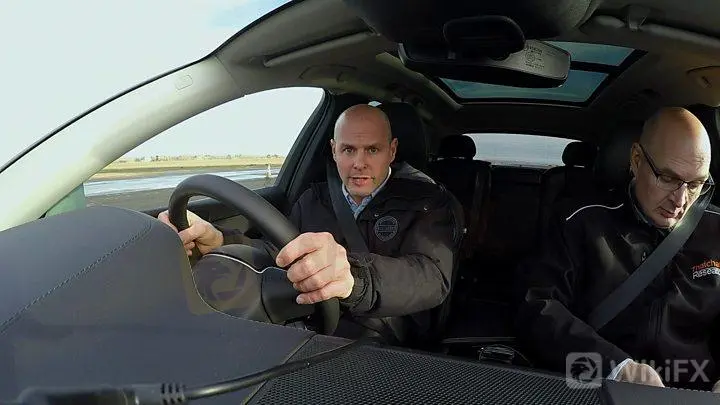简体中文
繁體中文
English
Pусский
日本語
ภาษาไทย
Tiếng Việt
Bahasa Indonesia
Español
हिन्दी
Filippiiniläinen
Français
Deutsch
Português
Türkçe
한국어
العربية
Road safety: UK set to adopt vehicle speed limiters
Abstract:Media playback is unsupported on your device Media captionTheo Leggett: 'The car brought us to a c

Media playback is unsupported on your device
Media captionTheo Leggett: 'The car brought us to a controlled halt'
Speed limiting technology looks set to become mandatory for all vehicles sold in Europe from 2022, after new rules were provisionally agreed by the EU.
The Department for Transport said the system would also apply in the UK, despite Brexit.
Campaigners welcomed the move, saying it would save thousands of lives.
Road safety charity Brake called it a “landmark day”, but the AA said “a little speed” helped with overtaking or joining motorways.
Safety measures approved by the European Commission included intelligent speed assistance (ISA), advanced emergency braking and lane-keeping technology.
The EU says the plan could help avoid 140,000 serious injuries by 2038 and aims ultimately to cut road deaths to zero by 2050.
Road deaths 'part of city living'
Tougher speeding fines come into force
Is the driving test getting more difficult?
EU Commissioner Elzbieta Bienkowska said: Every year, 25,000 people lose their lives on our roads. The vast majority of these accidents are caused by human error.
“With the new advanced safety features that will become mandatory, we can have the same kind of impact as when safety belts were first introduced.”
What is speed limiting technology and how does it work?
Under the ISA system, cars receive information via GPS and a digital map, telling the vehicle what the speed limit is.
This can be combined with a video camera capable of recognising road signs.
{16}
The system can be overridden temporarily. If a car is overtaking a lorry on a motorway and enters a lower speed-limit area, the driver can push down hard on the accelerator to complete the manoeuvre.
{16}
The car will not brake automatically when the speed limit is reduced, but will give the driver a visual warning instead. It is the driver's responsibility to obey the warning.
How soon will it become available?
It's already coming into use. Ford, Mercedes-Benz, Peugeot-Citroen, Renault and Volvo already have models available with some of the ISA technology fitted.
However, BBC business correspondent Theo Leggett says there is concern over whether current technology is sufficiently advanced for the system to work effectively.
In particular, many cars already have a forward-facing camera, but there is a question mark over whether the sign-recognition technology is up to scratch.
Other approved safety features for European cars, vans, trucks and buses include technology which provides a warning of driver drowsiness and distraction, such as when using a smartphone while driving, and a data recorder in case of an accident.
The new measures also include improvements to the direct vision of bus and truck drivers and the removal of blind spots.
How has the idea been received?
The move was welcomed by the European Transport Safety Council, an independent body which advises Brussels on transport safety matters.
But it said it could be several months before the European Parliament and Council formally approve the measures.
{27}
UK statistics show more than 1,700 people are killed on UK roads every year, while Brake says speed is a contributory factor in about a quarter of all fatal crashes.
{27}
Brake's campaigns director, Joshua Harris, said: This is a landmark day for road safety.
“These measures will provide the biggest leap forward for road safety this century.”
The UK's Department for Transport said: “We continuously work with partners across the globe to improve the safety standards of all vehicles. These interventions are expected to deliver a step-change in road safety across Europe, including the UK.”
What do critics say?
The AA thinks the system might have the unintended consequence of making drivers more reckless, not less.
AA president Edmund King said there was no doubt that new in-car technology could save lives, adding there was “a good case” for autonomous emergency braking to be fitted in all cars.
“When it comes to intelligent speed adaptation, the case is not so clear,” he said. The best speed limiter is the driver's right foot.
“The right speed is often below the speed limit - for example, outside a school with children about - but with ISA, there may be a temptation to go at the top speed allowed.”
Mr King added: “Dodgem cars are all fitted with speed limiters, but they still seem to crash.”
Disclaimer:
The views in this article only represent the author's personal views, and do not constitute investment advice on this platform. This platform does not guarantee the accuracy, completeness and timeliness of the information in the article, and will not be liable for any loss caused by the use of or reliance on the information in the article.
WikiFX Broker
Latest News
CySEC Warns Against Unauthorized Investment Firms in Cyprus
Why Even the Highly Educated Fall Victim to Investment Scams?
Warning Against Globalmarketsbull & Cryptclubmarket
Dukascopy Bank Expands Trading Account Base Currencies
UK Sets Stage for Stablecoin Regulation and Staking Exemption
Axi Bids AUD 52M to Acquire Low-Cost Broker SelfWealth, Outbidding Competitor Bell Financial
Crypto Influencer's Body Found Months After Kidnapping
STARTRADER Issues Alerts on Fake Sites and Unauthorized Apps
Italy’s CONSOB Blocks Seven Unregistered Financial Websites
Bitfinex Hacker Ilya Lichtenstein Sentenced to 5 Years in Prison
Currency Calculator


